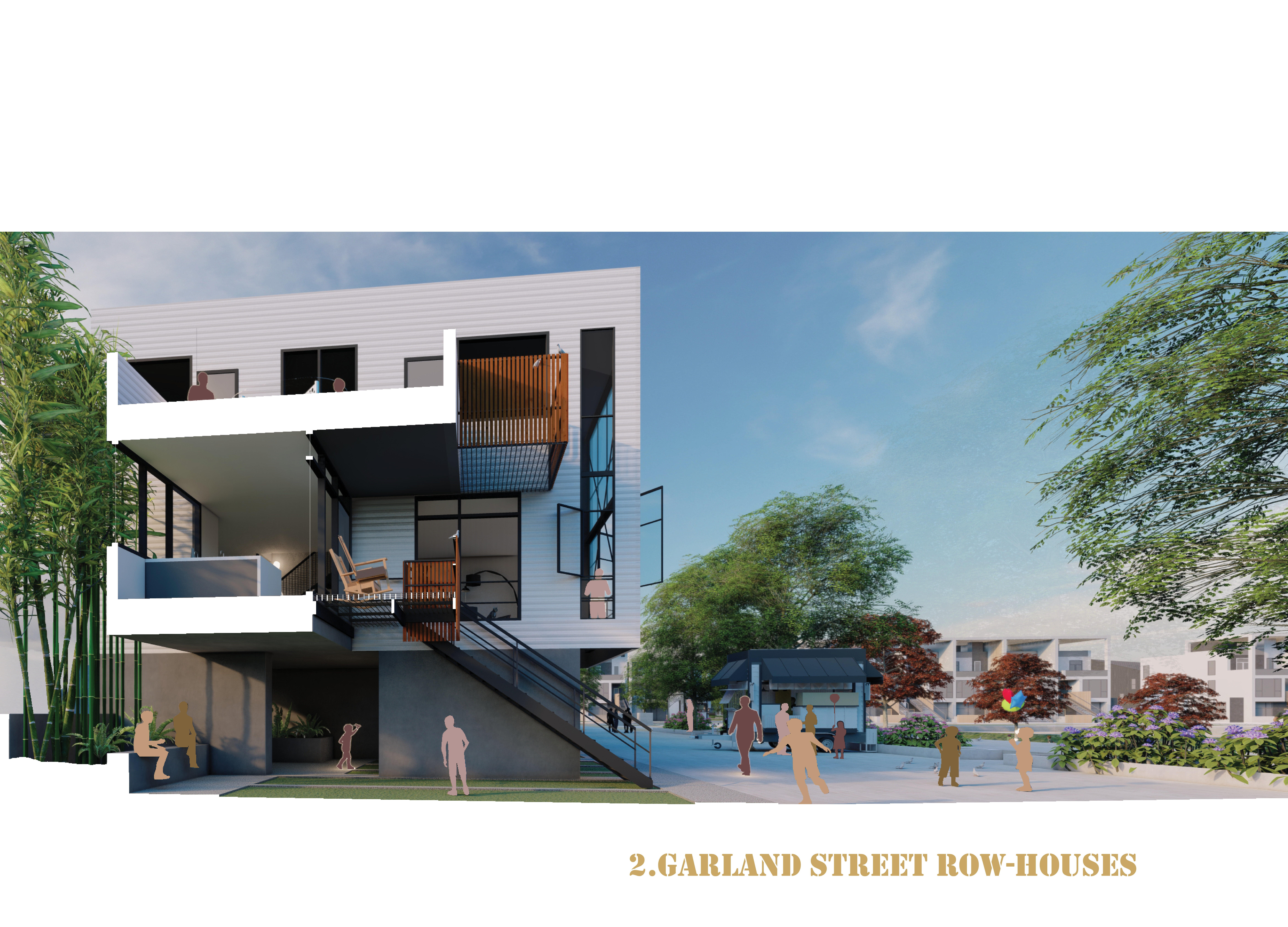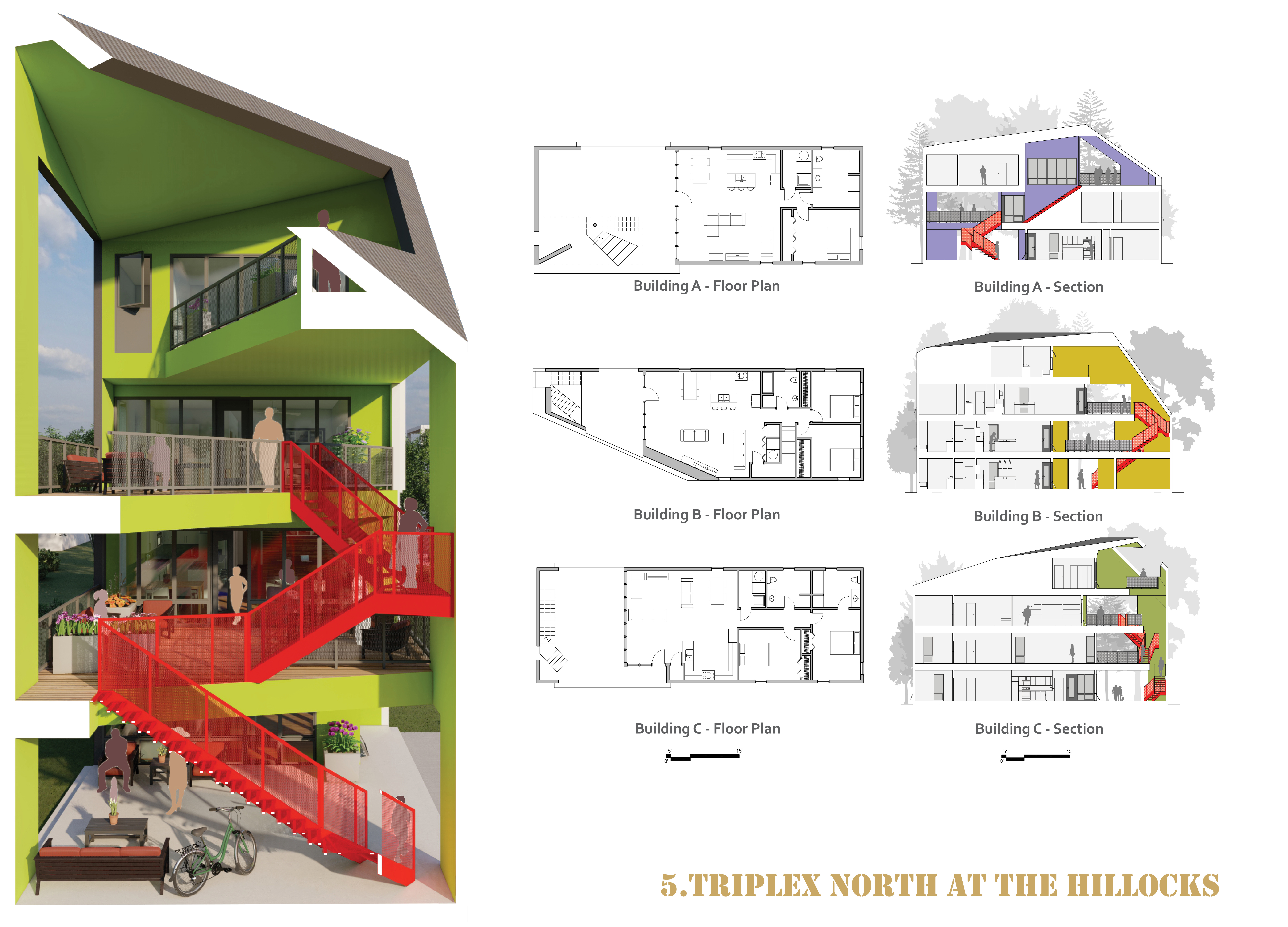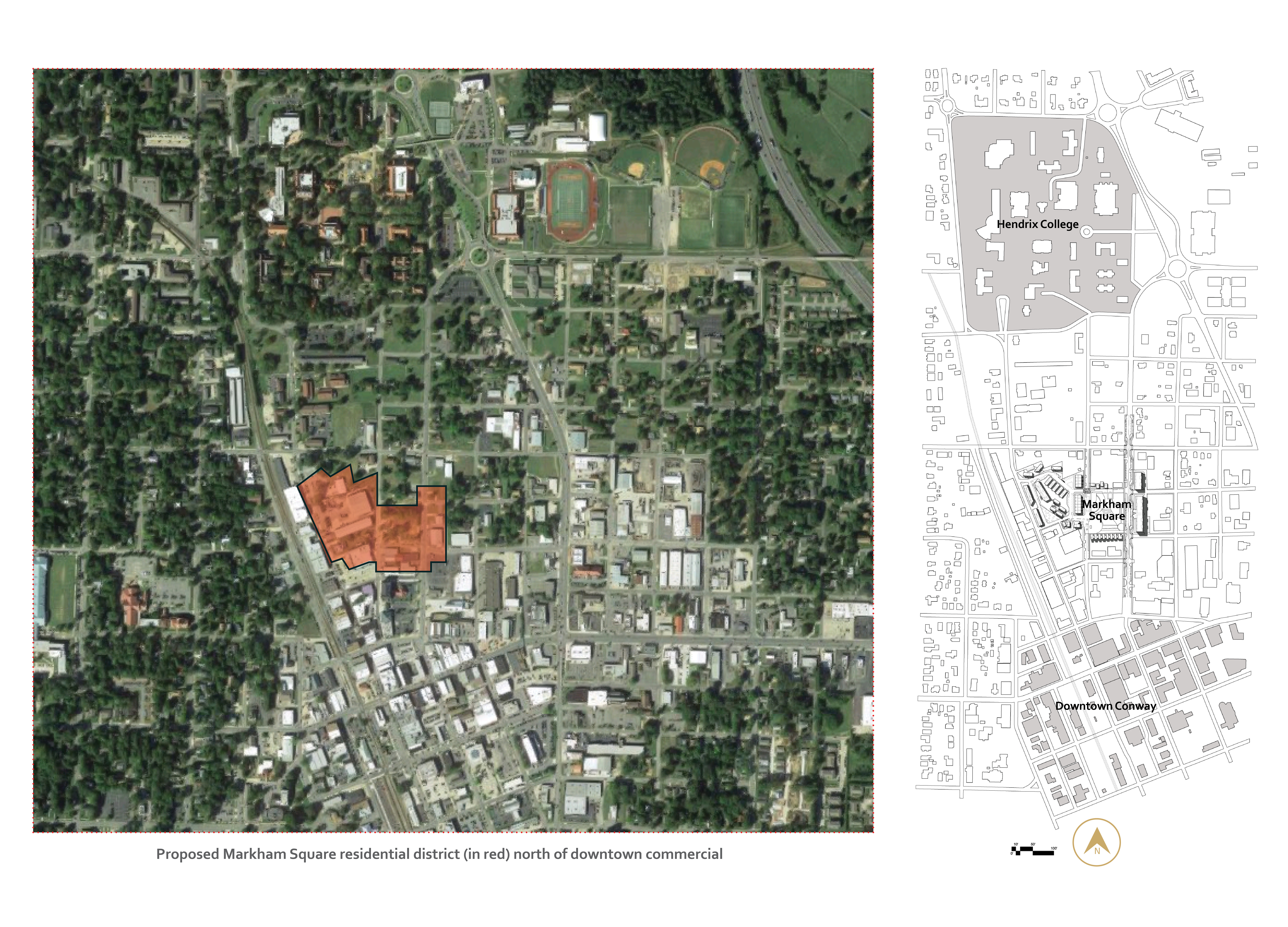Markham Square Housing District – This is a downtown regeneration scheme in which a residential square replaces a brownfield industrial site only two blocks from Main Street. Proposed housing typologies are multifamily walk-ups like townhouses, bungalows, triplexes, and courtyard housing, despite that the town has no tradition of multifamily housing. We incentivize downtown living by structuring highly imageable places where housing is organized around a wooded hillocks and a residential square, both defined by re-wilded landscapes for stormwater treatment. Housing edges are porous, offering another layer of social activity and placemaking vitality independent of building typology.
Architizer chatted with Stephen Luoni, Director, Steven L. Anderson Chair in Architecture and Urban Studies, and Distinguished Professor of Architecture at University of Arkansas Community Design Center, to learn more about this project.
Architizer: What inspired the initial concept for your design?
Stephen Luoni: A high water table and chronic flooding has prevented this traditionally low-income neighborhood from realizing its full development potential. Since installation of costly underground stormwater drainage was not an option, we organized housing pockets around urban spaces that are “rain terrains”. Rain terrains manage and treat water on site rather than drain water downstream, where it becomes someone else’s problem. Streets, parking facilities, squares, and park spaces are all part of an ecological-based water treatment system that underpins the neighborhood. Rather than move pollution problems around, we designed urban landscapes to deliver ecosystems services (flood and pollution control, carbon sequestration, habitat, food, pollination, etc.) in addition to urban services, while providing housing with unique social settings.

© University of Arkansas Community Design Center

© University of Arkansas Community Design Center
What do you believe is the most unique or ‘standout’ component of the project?
I was always intrigued by Christopher Alexander’s pattern language #160 “Building Edge” in which he implores us to “treat the edge of the building as a ‘thing,’, a ‘place,’ a zone with volume to it, not a line or interface with no thickness.” While the buildings are simple volumes, spatial layering occurs through frontages–porches, balconies, terraces, and decks–that thicken building edges and facilitate social life at the interface between building and urban systems. Frontages not only operate across architectural and urban scales, but they deliver design quality though the tectonics of frontality.

© University of Arkansas Community Design Center

© University of Arkansas Community Design Center
What was the greatest design challenge you faced during the project, and how did you navigate it?
We live in a state whose median household income is only two-thirds of the national median income, so ensuring affordability while providing urban amenities was key to attracting community support. We limited building massing to singular volumes and roof forms, directing resources toward the liminal or in-between non-conditioned spaces, like screened porches. Porch rooms expand the modest areas of living space and are cheaper to build than environmentally conditioned space. Along with frontage amenities, the neighborhood template itself delivers value and will reward early equity investment.
Because there is not an ecosystem of developers experienced in missing middle housing, we had to meet the market where it is, to make the case for downtown housing that is not driven by single-family suburban types. Missing middle housing is not unfamiliar to the small-scale residential contractor.

© University of Arkansas Community Design Center

© University of Arkansas Community Design Center
How did the context of your project — environmental, social or cultural — influence your design?
Besides the environmental challenges related to urban stormwater runoff and flooding already mentioned, there are social challenges related to race and access to the city. This working-class industrial neighborhood is predominantly African American and undergoing gentrification sparked by new investments in downtown revitalization. The challenge is to manage gentrification processes in a way that does not create widespread displacements of households that sustained downtown even when it was not a popular place. Design for the square itself was co-created with neighborhood stakeholders, while the housing plan sponsors a wide range of dwelling unit types (900 – 2,100 sf) that will appeal to diverse income groups.

© University of Arkansas Community Design Center

© University of Arkansas Community Design Center
What drove the selection of materials used in the project?
The material palette of light-frame wood construction with cladding options of wood siding and cementitious panels reflects the standard for non-commercial grade affordable residential construction. Screen fabrics and outdoor steel staircases with wire metal mesh are a foil to the wood-framed massing, which rely on extensive surface area for structural integrity. The platform 2×4 or 2×6 wood system supplemented with laminated veneer lumber (LVL) beams is intrinsically an American vernacular.

© University of Arkansas Community Design Center

© University of Arkansas Community Design Center
What is your favorite detail in the project and why?
I love the dumbness of the triplex typology. Its planning is blunt, affordable, and very flexible yet each unit gets an extensive covered porch room–doubling its living room area–that can be customized to its urban context. The triplex massing and frontage vocabulary is quintessentially urban and not hostage to the simple expression of its three units.

How important was sustainability as a design criteria as you worked on this project?
The notion that infrastructure had to deliver ecological services drove the framework of the project. We also had resilience in mind: how would units perform if the neighborhood were to lose power? While we experience all four seasons in Arkansas, building thermal performance is driven by cooling as we are a “sunbelt state” with high levels of humidity. Windows have to be operable; outdoor spaces should substitute for indoor spaces if cooling were to be lost; and cross ventilation should support natural conditioning and lighting of loft environments wherever dwelling unit plans permit.

In what ways did you collaborate with others, and how did that add value to the project?
Developer input was certainly helpful in understanding market tolerance and financing metrics, which shape much of what gets built in everyday environments. Too, working with the City of Conway planning staff in securing grants from the U.S. Environmental Protection Agency on watershed planning, and the National Endowment for the Arts to address neighborhood and housing planning, allowed for a more holistic planning approach than the typical procurement process undertaken by municipalities for planning services. This is especially important for small-and-mid-sized cities who want to exercise greater oversight in securing high-quality urban development. Often, in these communities, an inexperienced developer ecosystem is bringing suburban development practices to urban settings where such is inappropriate and robbing the city of its future potential.

Credits
University of Arkansas Community Design Center an outreach center of the Fay Jones School of Architecture and Design: Stephen Luoni, (Steven L. Anderson Chair in Architecture and Urban Studies), Director; Claude M. Terral III, AIA, Project Architect; Adriana Ramos-Hinojos; Tarun Kumar Potluri, Project Designer; Kacper Lastowiecki, Project Designer; Isabelle Troutman, Student Intern; Jala Jones, Student Intern; Linda Komlos, Administrative Analyst
Fay Jones School of Architecture and Design: Peter MacKeith, Dean and Professor; John Folan AIA, LEED AP BD+C, Head and Professor, Department of Architecture
Architecture Students: Molly Dillard; Bryan Murren; Mitchell Pickering; Urbano Soto; Bethany Stanford; Dayton Thurn; Garrison Weaver
Landscape Architects, Civil/Ecological Engineers: Ecological Design Group, Inc.
Consultants
Water Resources/Environmental Consultants: FTN Associates, Ltd.; City Planning Consultant: Scott Grummer (formerly with the City of Conway); City of Conway, Arkansas: Finley Vinson, Director, Transportation and City Engineer; Phillip J. Vick, P.E., Civil Engineer; James Walden, Director, Planning & Development; Levi Hill, Assistant Director, Planning & Development; Marsha Guffey, Grants Administrator; Lake Conway Point Remove Watershed Alliance; Pine Street Area Community Development Corporation
This project was made possible by funding from the National Endowment for the Arts “Art Works” program.
For more on Markham Square Housing District, please visit the in-depth project page on Architizer.








 Markham Square Housing District
Markham Square Housing District 


